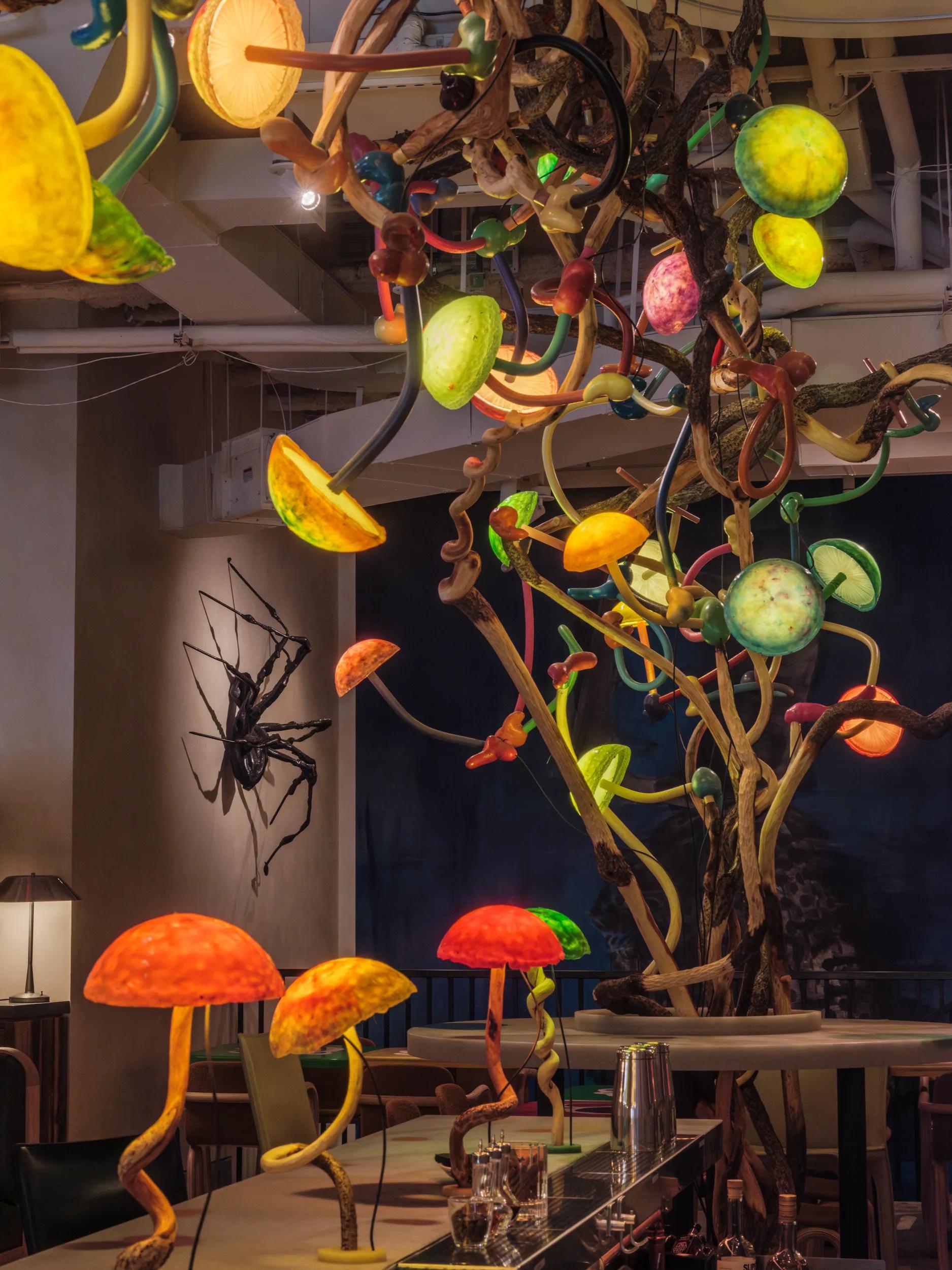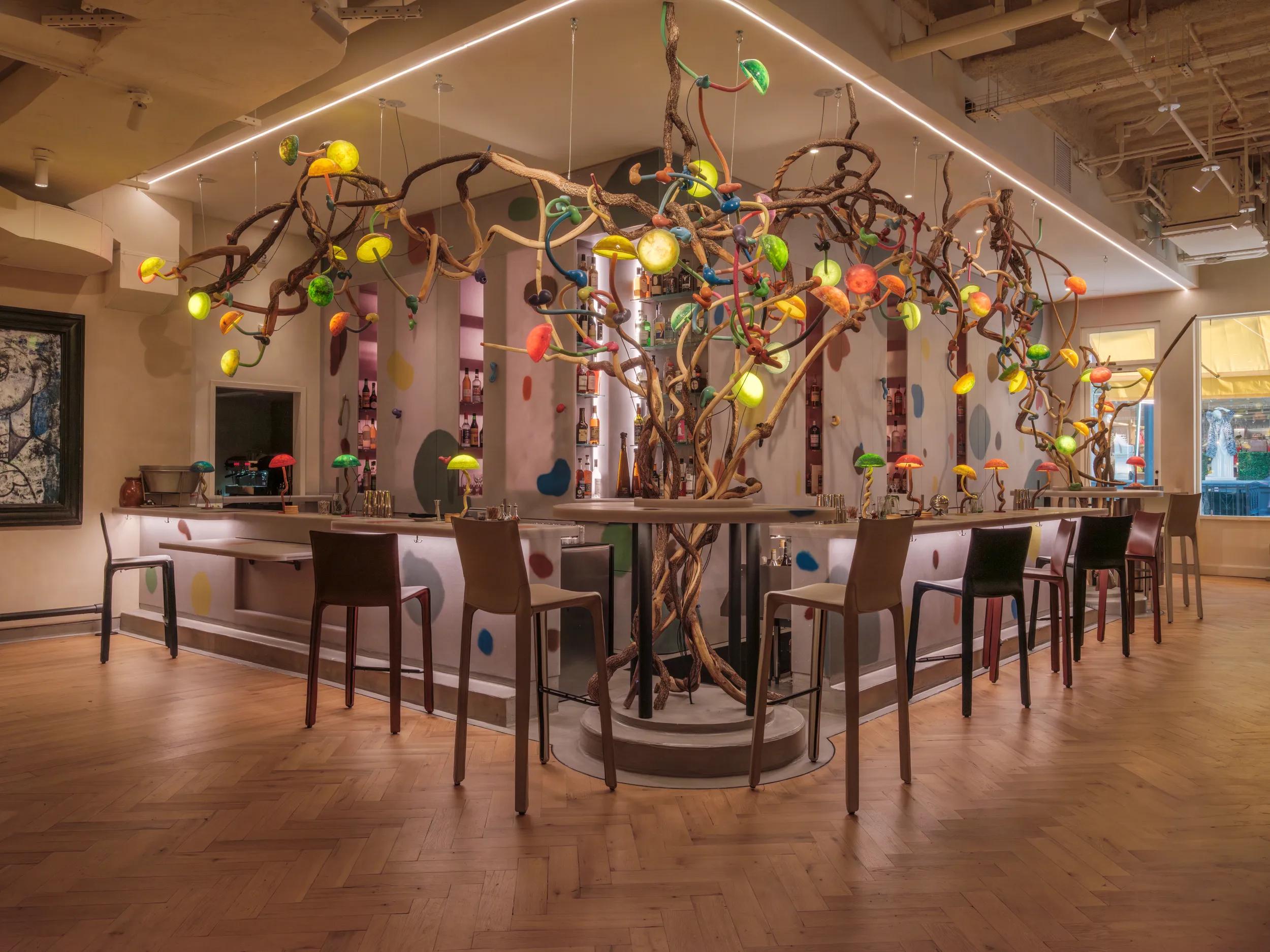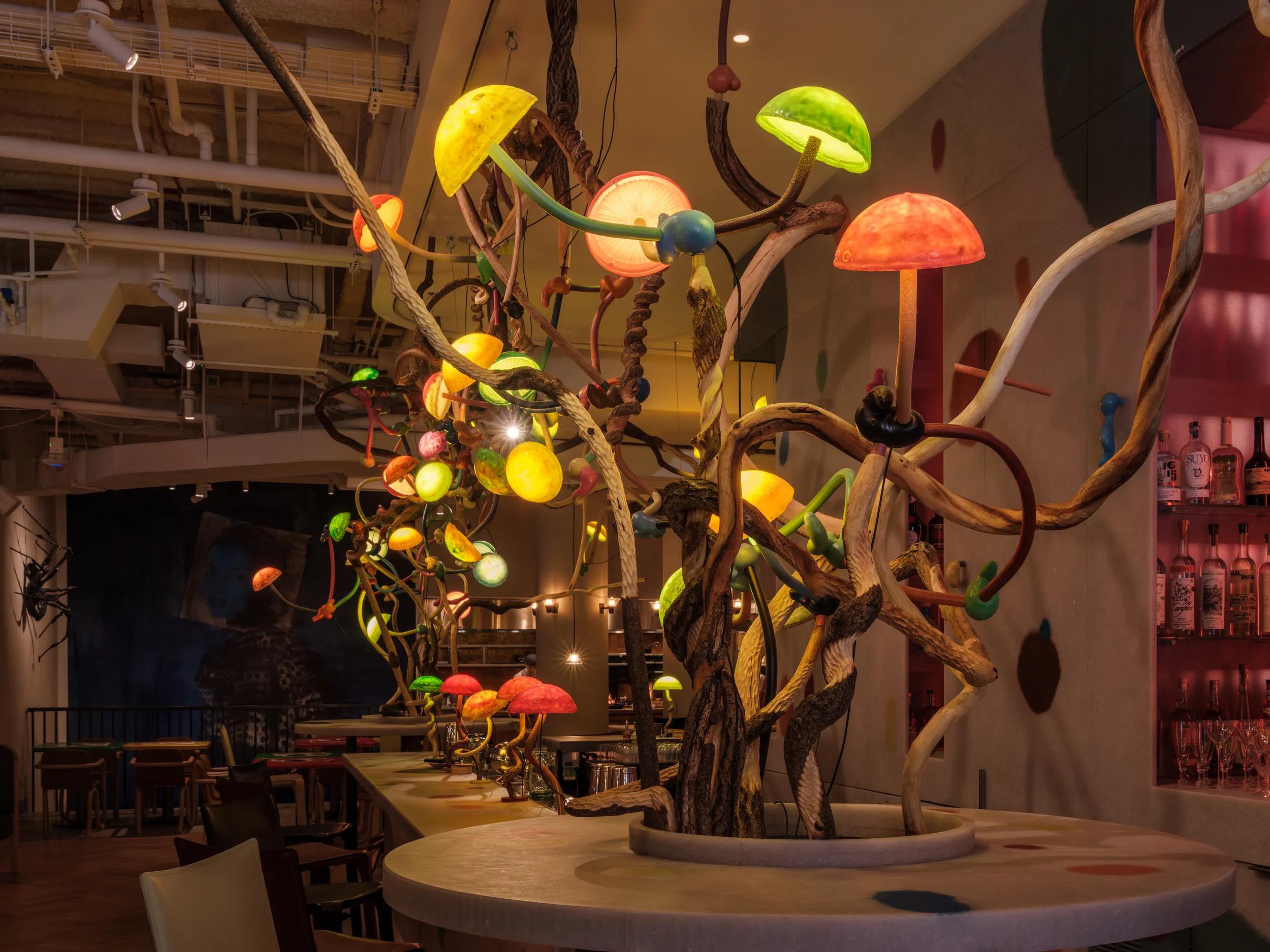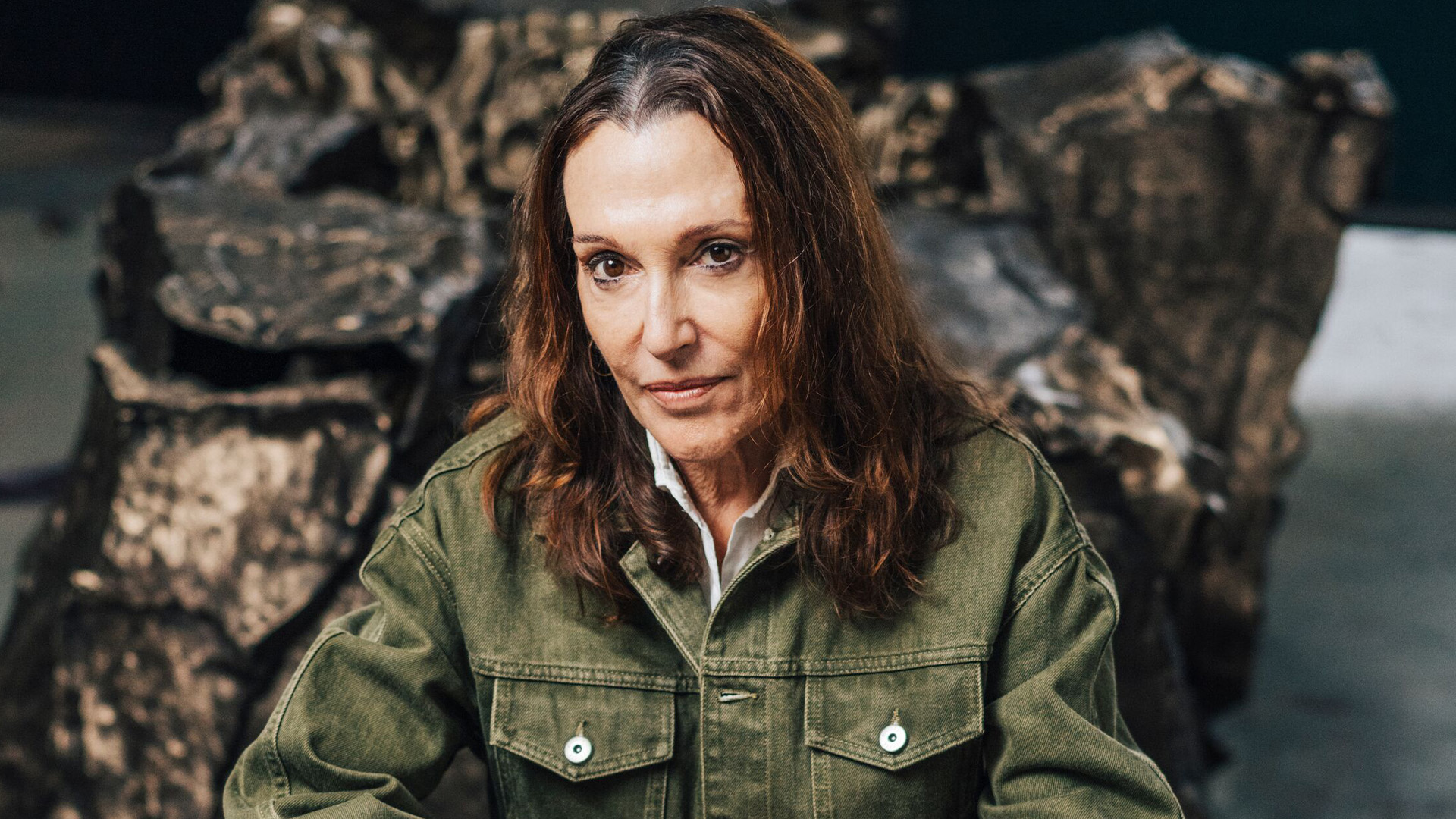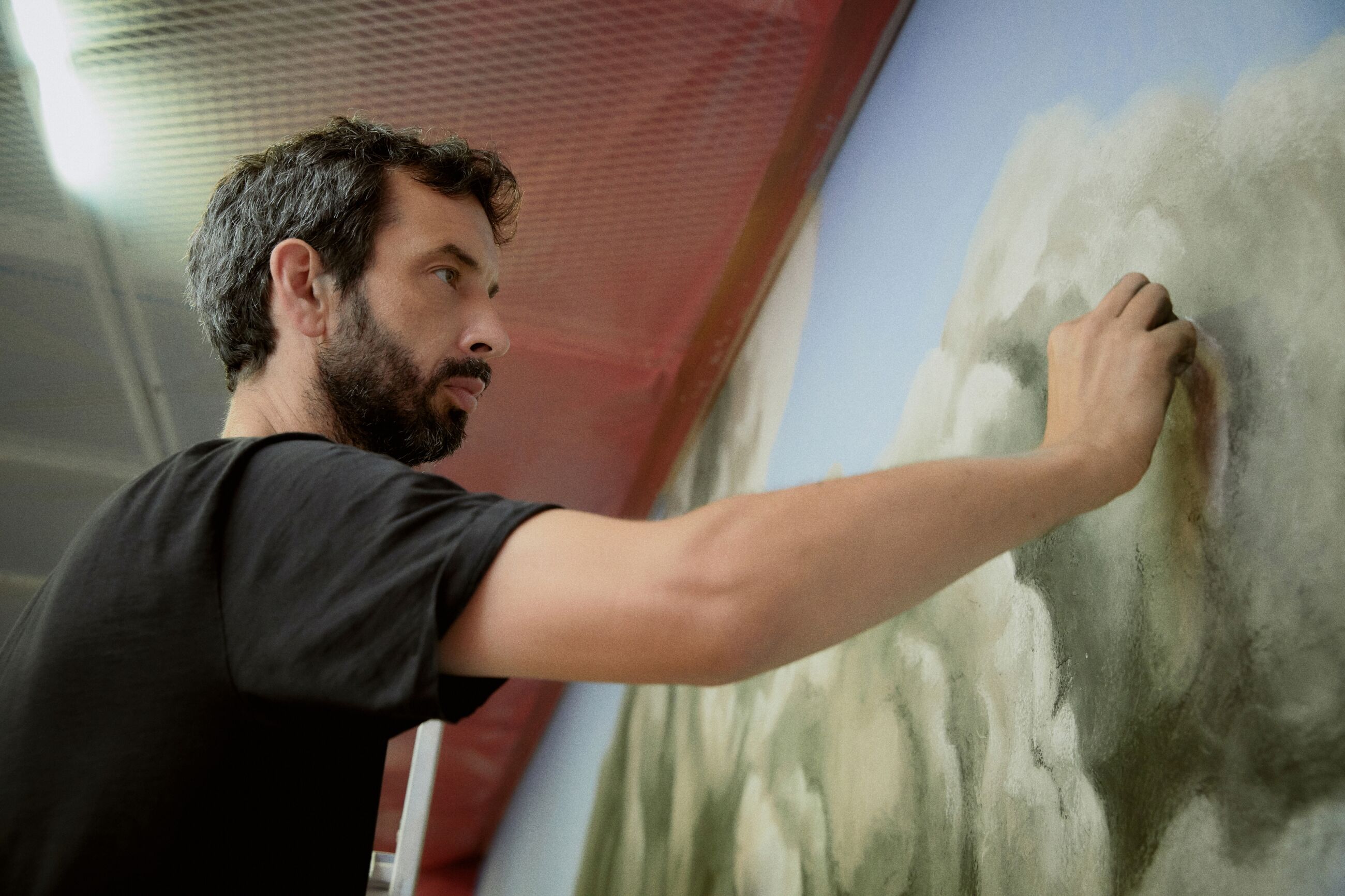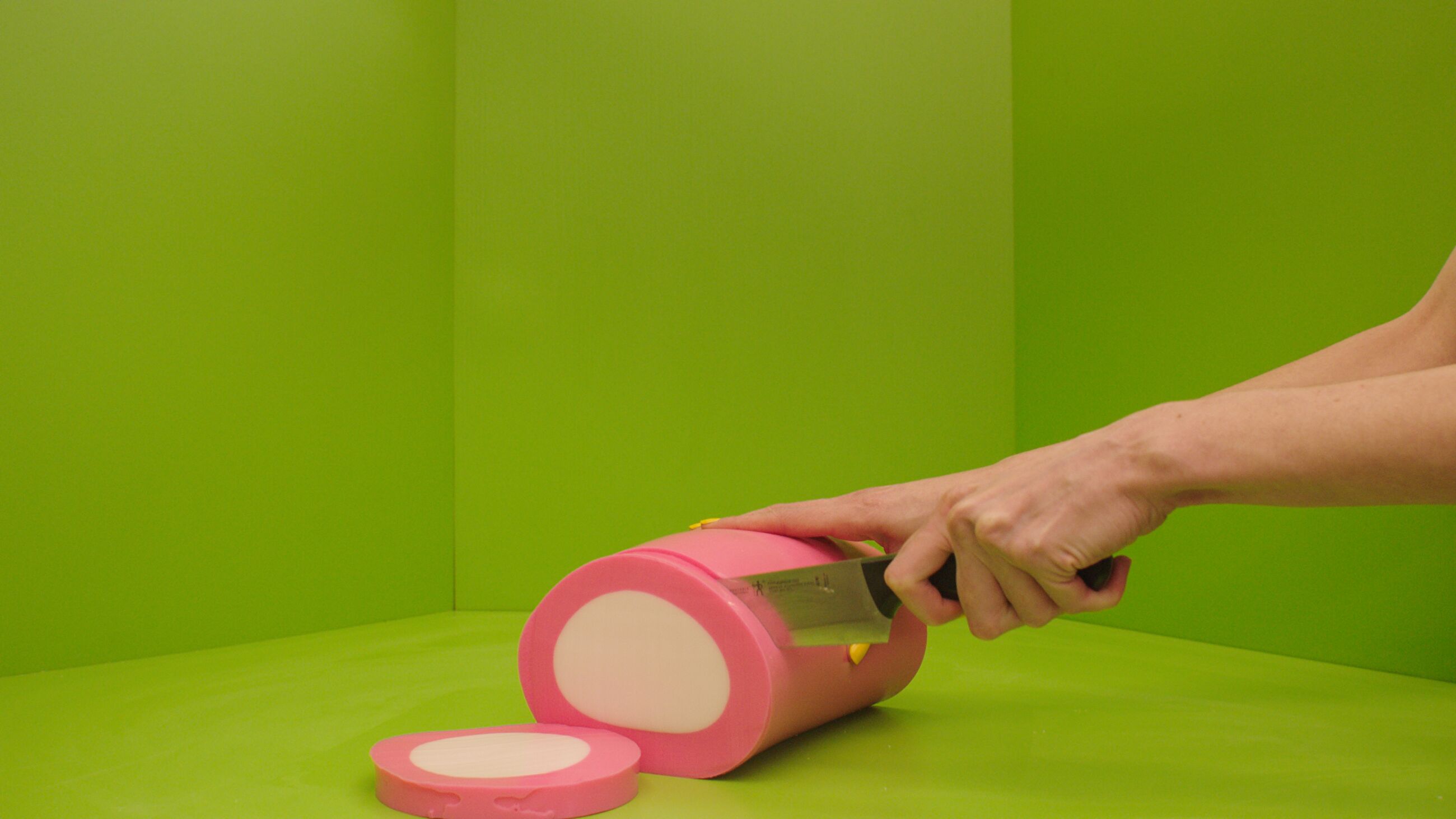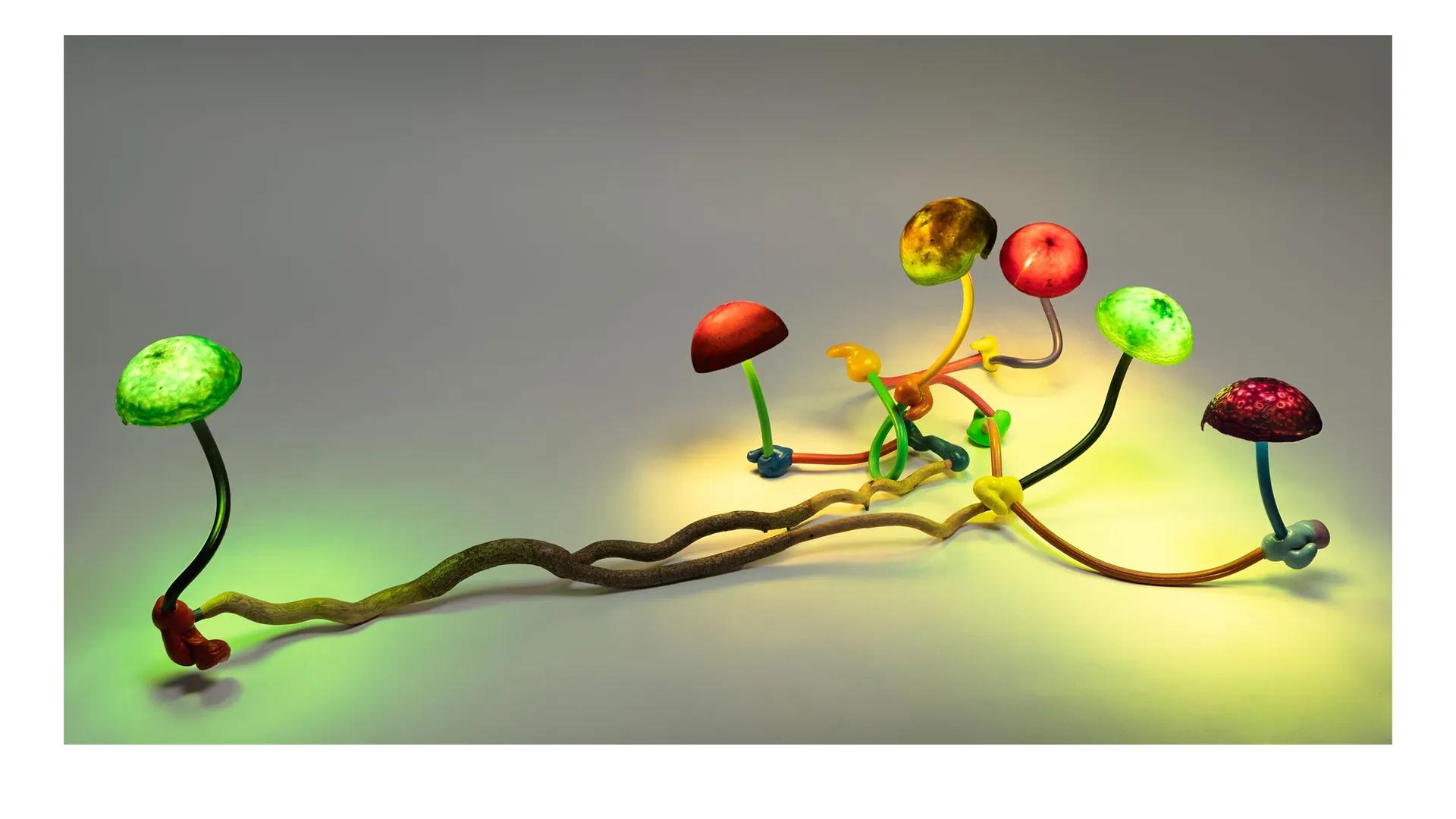
Mika Rottenberg
Resources
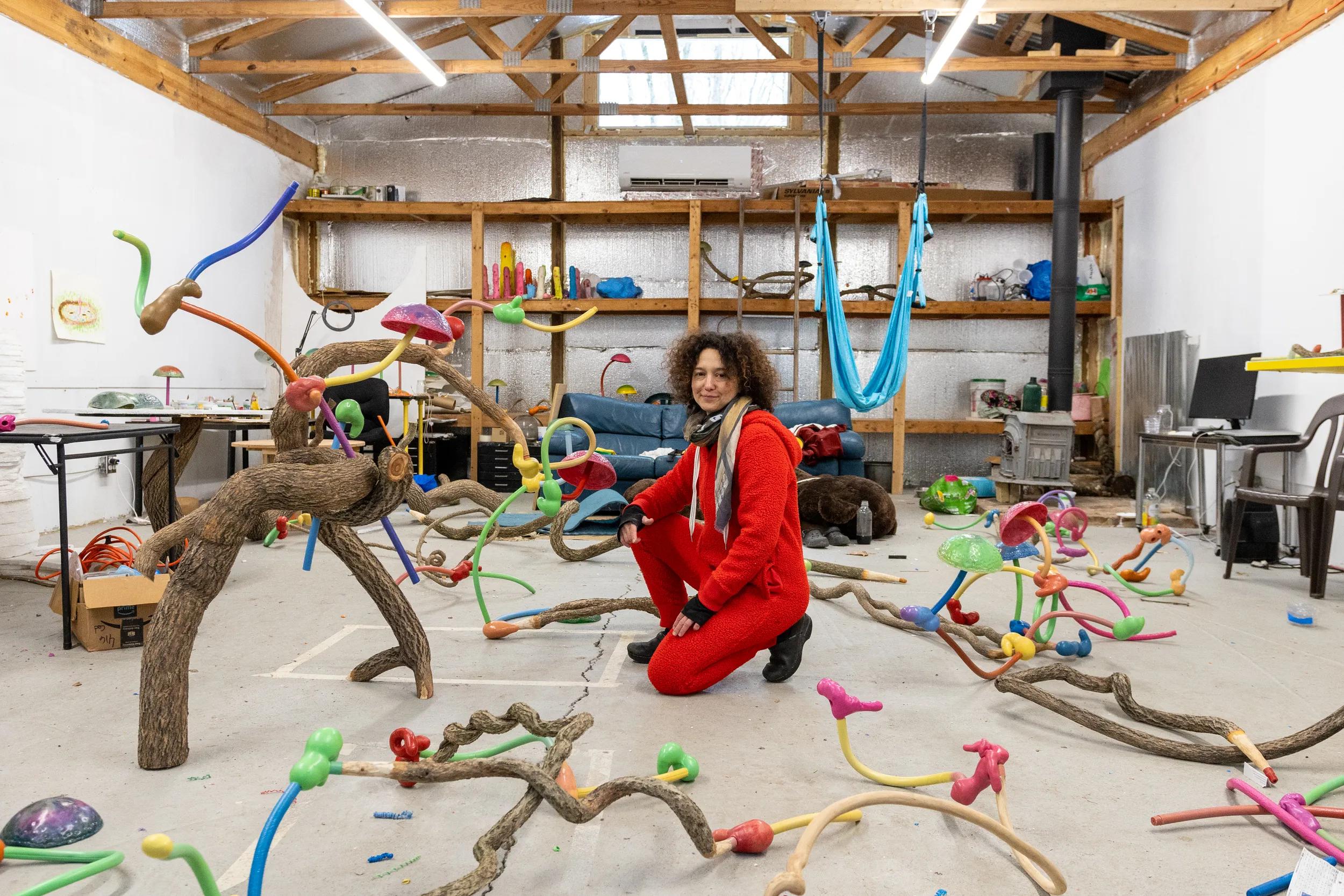

Mika Rottenberg: Rottenbar
In November of 2023, we unveiled the Rottenbar, a permanent installation created by Argentina-born, New York-based artist Mika Rottenberg on the second floor of the gallery’s building on West 22nd Street. Made from carved bittersweet vines and reclaimed plastic that Rottenberg molds, extrudes and presses into sculptural forms, the Rottenbar—from conception to production—suggests the artist’s studio can be an incubator for a regenerative circle of creation and consumption.
Reclaimed plastic fabrication system was developed with designer Gary Dusek. Plastic and wood carpentry by artist Garlan Miles and wood harvesting and carving by artist Max Bard. Studio production was coordinated by Natalia Sofia Almada. The LED fixtures were fabricated by RUSHdesign, and the panels for the bar were created in collaboration with Smile Plastics in Swansea. The plastics collection team at Inner City Green Team Economic and Environmental Development (IGCT) consists of NYC Housing Authority residents and is led by Founder Brigitte Charlton-Vicenty.
1 / 3
Mika Rottenberg: Plastic
For the fifth film in our Material series, which examines artists’ transformations of raw materials, Mika Rottenberg takes us into her upstate New York studio, where she gives new meaning and shape to plastic, which she describes as ‘trapped ancient sunlight that cannot decompose and grow back into the system.’ For a new series of works, Rottenberg uses discarded plastics from housing complexes in Harlem, gathered and repurposed by the Inner City Green Team, a community organization.
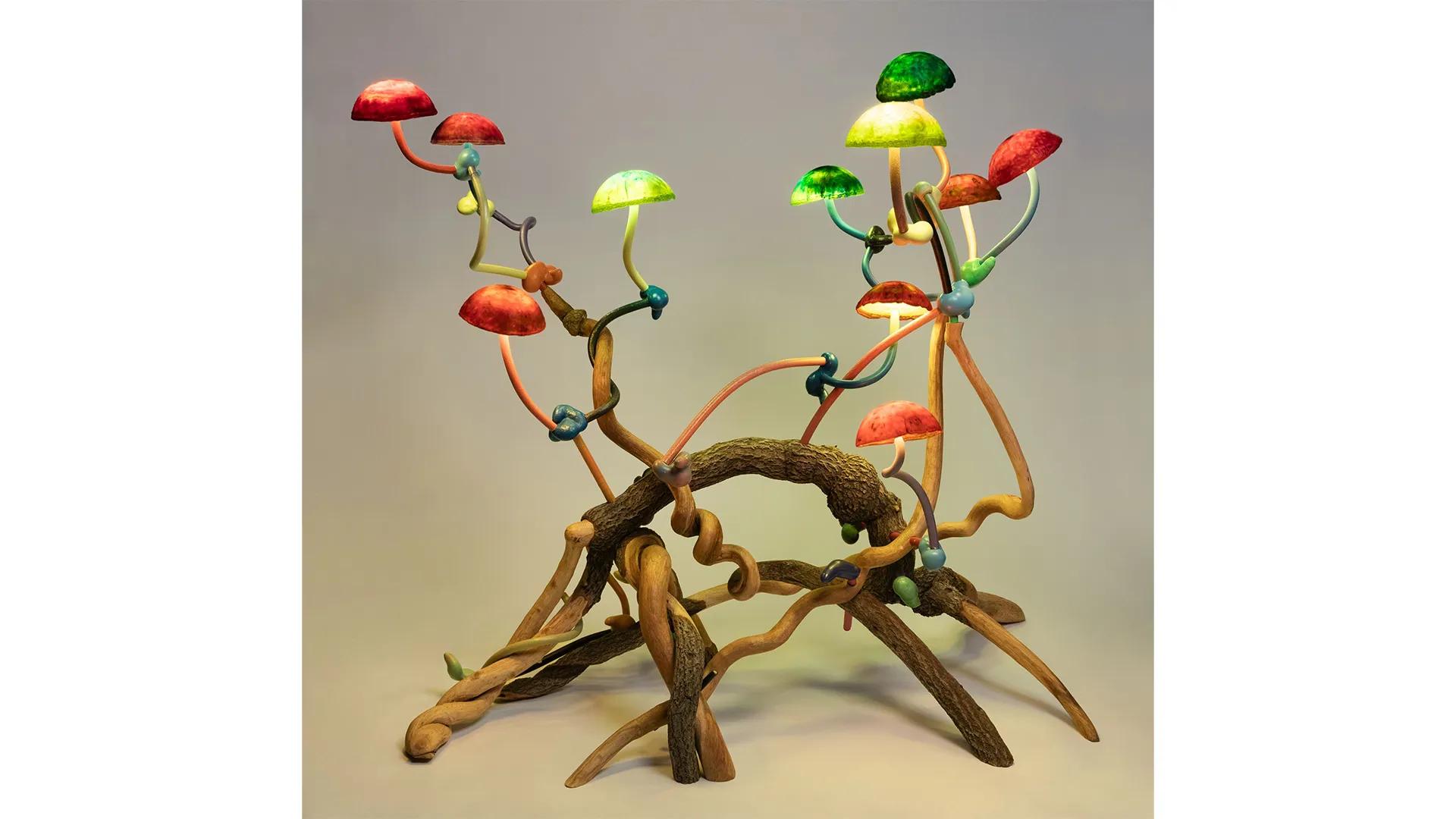
Queer Ecology in Antimatter Factory
‘Rottenberg allows us to re-engage with capitalist production, re-animating it with a sense of wonder, humor, surprise, and delight. Showing us that although capitalism may seem ubiquitous, it has always been a patchy affair, and to accord this economic system a totalizing capacity gives it too much power. Besides, wouldn’t we rather spend the day sneezing out rabbits?’ – Heather Davis on Queer Ecology
Read further in the online catalogue for Antimatter Factory
In Conversation: Nature Thinking with Mika Rottenberg, Stefanie Hessler & Art Switch
‘Plastic, as a fossil fuel byproduct, is ancient life trapped without the ability to decompose and complete a cycle. This is why it’s such a tragically attractive material...By giving new meaning and shape to these materials, Rottenberg transforms the toxic into something of value, and in doing so creates a restorative counter proposal to the systems of mass production that deeply disrupt our planet.’
Mika Rottenberg
Mika Rottenberg: In the Studio
Chandelier for Manuela
‘Chandelier for Manuela’ (2024) is a site-specific work, specially commissioned for Manuela, New York. Mika Rottenberg’s whimsical construction consists of a bar and chandelier, illuminated by lights that beam though mushroom-like colored orbs. Playful in both its color and composition, ‘Chandelier for Manuela’ provides restaurant guests with a social, aesthetic and conceptual gathering point.
The work is made of over a ton of plastic waste collected from New York City streets with the help of Inner City Green Team (ICGT). The disregarded plastic is combined with harvested and carved invasive bittersweet vines that flourish and choke forests in Upstate New York. Reclaimed plastic sticks are used to weave the vines together, resulting in a modular system that can be indefinitely replicated. By combining otherwise disregarded toxic and invasive materials, Rottenberg engages in a style that she jokingly calls “eco rococo”.
Resources
1 / 10



